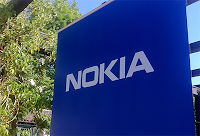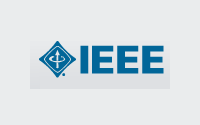
Avago Technologies agreed to acquire Broadcom for $17 billion in cash consideration and the economic equivalent of approximately 140 million Avago ordinary shares, valued at $20 billion as of May 27, 2015, resulting in Broadcom shareholders owning approximately 32% of the combined company. Based on Avago's closing share price as of May 27, 2015, the implied value of the total transaction consideration for Broadcom is $37 billion.
The merger will create the third largest global semiconductor company with strong presence in wired infrastructure, wireless infrastructure, enterprise storage, ASICs, PHYs, Ethernet switching silicon and set-top box silicon. It will have combined annual revenues of approximately $15 billion and $77 billion in enterprise value.
Upon completion of the acquisition, the new company will be known as Broadcom Limited. Mr. Hock Tan, President and Chief Executive Officer of Avago, will continue to serve as President and CEO. Broadcom co-founder Dr. Henry Samueli will join the board of the combined company as will another director from Broadcom. In addition, Dr. Samueli will be appointed Chief Technology Officer of the combined company. Broadcom co-founder Dr. Henry Nicholas will serve in a strategic advisory role within the combined company, reporting to Mr. Tan.
"Today's announcement marks the combination of the unparalleled engineering prowess of Broadcom with Avago's heritage of technology from HP, AT&T, and LSI Logic, in a landmark transaction for the semiconductor industry," said Hock Tan, President and Chief Executive Officer of Avago. "The combination of Avago and Broadcom creates a global diversified leader in wired and wireless communication semiconductors. Avago has established a strong track record of successfully integrating companies onto its platform. Together with Broadcom, we intend to bring the combined company to a level of profitability consistent with Avago's long-term target model."
"When Henry Nicholas and I founded Broadcom, we had a vision of creating the world leader in communications semiconductors. Today's announcement is a continuation of that vision and we could not think of a better partner for the future than Avago," stated Dr. Henry Samueli, Co-Founder, Chief Technical Officer and Chairman of the Board of Broadcom.
Avago intends to fund the $17 billion of cash consideration with cash on hand from the combined companies and $9 billion in new, fully-committed debt financing from a consortium of banks.
http://www.avagotech.com
http://www.broadcom.com
- Avago Technologies, which is headquartered in Singapore and San Jose, California, was originally the semiconductor division of HP and, later, Agilent Technologies. The division was bought out by private investors KKR and Silver Lake Partners in 2005 and later completed an IPO in 2009.
- In 2014, Avago Technologies acquired LSI Corporation for $6.6 billion, but later sold off LSI's SSD division to Seagate and then its Axxia networking division to Intel.
- In February 2015, Avago agreed to acquire Emulex, which supplies Ethernet and Fibre Channel connectivity products to leading OEMS. In 2013, Emulex acquired Endace, which specializes in monitoring solutions. Emulex is based in Costa Mesa, California.
- Broadcom, which is based in Irvine, California, was founded in 1991 by Henry Samueli and Henry T. Nicholas III , two professors from UCLA. Broadcom has about 10,000 employees worldwide and holds more than 10,700 U.S. and 3,700 foreign patents. 2014 revenue was $8.43 billion. In 2014, Broadcom decided to exit its cellular baseband business.
 Equinix is bidding to acquire TelecityGroup for £11.45 per share, 35% premium to the closing price of February 10, 2015, and representing an equity value of $3.6 billion. The offer is composed of 50% stock and 50% cash.
Equinix is bidding to acquire TelecityGroup for £11.45 per share, 35% premium to the closing price of February 10, 2015, and representing an equity value of $3.6 billion. The offer is composed of 50% stock and 50% cash. In February 2015, TelecityGroup plc and Interxion, both leading operators of data centers across Europe, announced plans for a merger.
In February 2015, TelecityGroup plc and Interxion, both leading operators of data centers across Europe, announced plans for a merger. 


























































